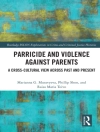Vanishing for the vote recounts what happened on one night, Sunday 2 April, 1911, when the Liberal government demanded every household comply with its census requirements. Suffragette organisations urged women, all still voteless, to boycott this census.
Many did. Some wrote ‘Votes for Women’ boldly across their schedules. Others hid in darkened houses or, in the case of Emily Wilding Davison, in a cupboard within the Houses of Parliament.
Yet many did not. Even some suffragettes who might be expected to boycott decided to comply – and completed a perfectly accurate schedule. Why?
Vanishing for the vote explores the ‘battle for the census’ arguments that raged across Edwardian England in spring 1911. It investigates why some committed campaigners decided against civil disobedience tactics, instead opting to provide the government with accurate data for its health and welfare reforms.
This book plunges the reader into the turbulent world of Edwardian politics, so vividly recorded on census night 1911. Based on a wealth of brand-new documentary evidence, it offers compelling reading for history scholars and general readers alike.
Sumptuously produced, with 50 illustrations and an invaluable Gazetteer of suffrage campaigners.
สารบัญ
PART ONE: Prelude – people and their politics
1. Charlotte Despard and John Burns, the Colossus of Battersea
2. Muriel Matters goes vanning it with Asquith: campaigning cross country
3. Propaganda culture: Clemence and Laurence Housman
4. Parallel politics: Lloyd George plus Midlands suffragettes
PART TWO: Narrative – October 1909 to April 1911
5. Plotting across central London: census and tax resistance
6. The battle for John Burns’ Battersea revisited
7. The Census Bill and suffragette boycott plan
8. Lloyd George goes a-wooing vs Burns’ ‘Vixens in Velvet’
9. The King’s Speech: Jessie Stephenson parachutes into Manchester
10. Battleground for democracy: census versus women’s citizenship
PART THREE: Census night – places and spaces
11. Emily Wilding Davison’s Westminster – and beyond
12. The Nevinsons’ Hampstead – and central London entertainments
13. Laurence Housman’s Kensingon, with Clemence in Dorset
14. Annie Kenney’s Bristol and Mary Blathwayt’s Bath
15. Jessie Stephenson’s Manchester, Hannah Mitchell’s Oldham Road
16. English journey: sweeping back down from Teesside to Thames
PART FOUR: The Census and beyond
17. After census night: Clemence’s resistance, Asquith’s betrayal
18. Telling the story: suffrage and census historiographies
19. Sources and their analysis: Vanishing for the Vote?
GAZETTEER OF CAMPAIGNERS jointly compiled with Elizabeth Crawford.
Select bibliography
References: endnotes
Index
เกี่ยวกับผู้แต่ง
Jill Liddington is an Honorary Research Fellow at the University of Leeds












